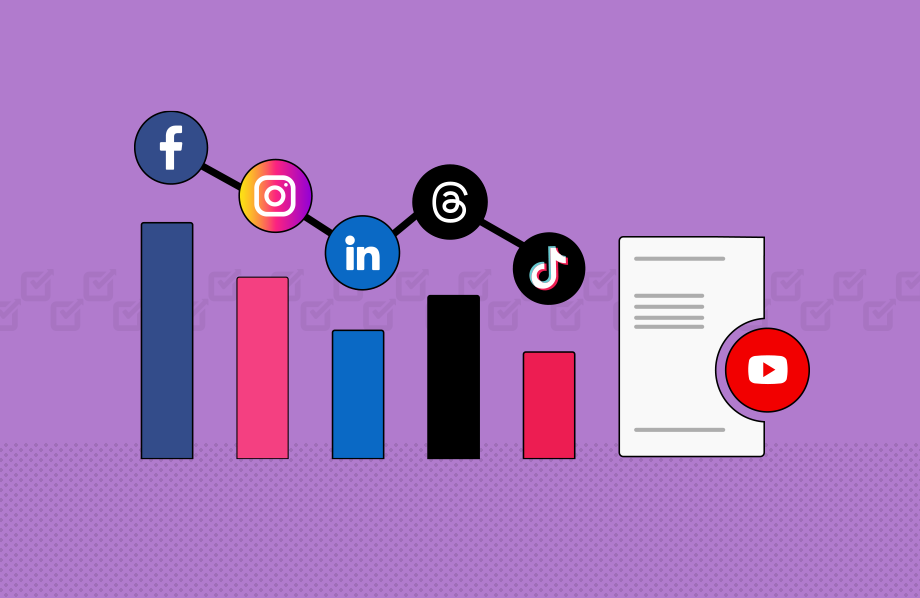For example, if a customer recently purchased a product, you can follow up with an email suggesting complementary products or offering a discount on their next purchase. Statistics show that personalized email campaigns generate six times higher transaction rates compared to non-personalized ones.
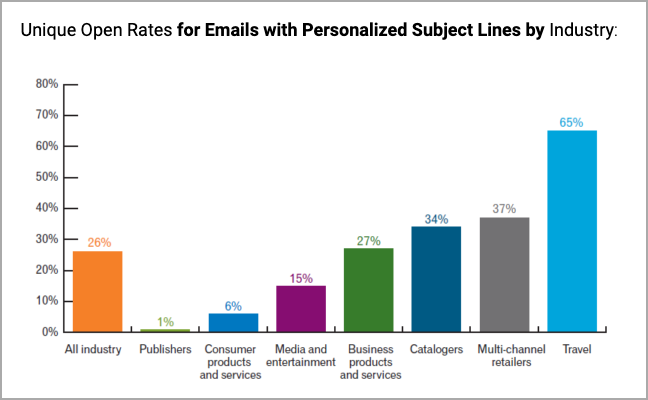
Personalization and Authentic Human Connection
Small businesses are also at a huge advantage when it comes to the ability to personalize products and services based on customer needs and build an authentic human connection. It’s easiest to build brand and customer loyalty when you have direct contact with customers, who are the greatest source of actionable feedback on ways you are succeeding, and where your company or product might fall short.
Consider running a marketing promotion targeted at your loyal customer base, offering discounts or special offers as a thank you for their patronage. In 2024, 80% of consumers reported they are more likely to purchase from brands that offer personalized experiences.
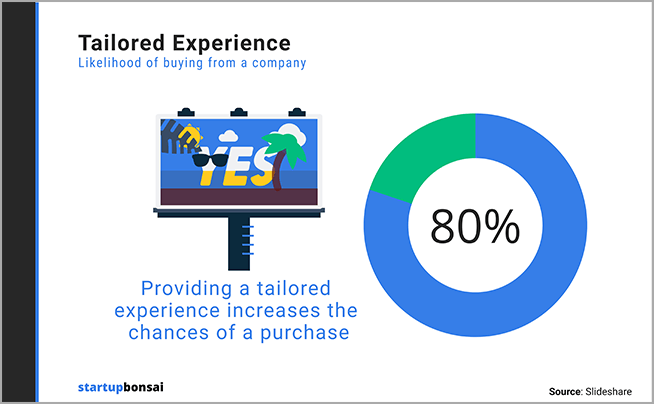
Building a Strong Community
Creating a community around your brand can significantly boost loyalty and engagement, as 57% of consumers are more likely to spend more with brands they feel connected to. Brands that develop a bespoke community or establish a social media community platform like a Facebook Group or or other forum where customers can interact with each other and your business serve to capitalize on this metric. Such a community enables customers to share their experiences and feedback while allowing you to engage directly with your audience in a more informal setting.
To sustain and grow it, actively participating in discussions, answer questions, and share valuable content to keep your brand community vibrant and engaged. These interactions provide valuable insights into customer preferences and pain points, helping you tailor your products and services to better meet their needs, and ultimately driving greater customer loyalty and increased spending.
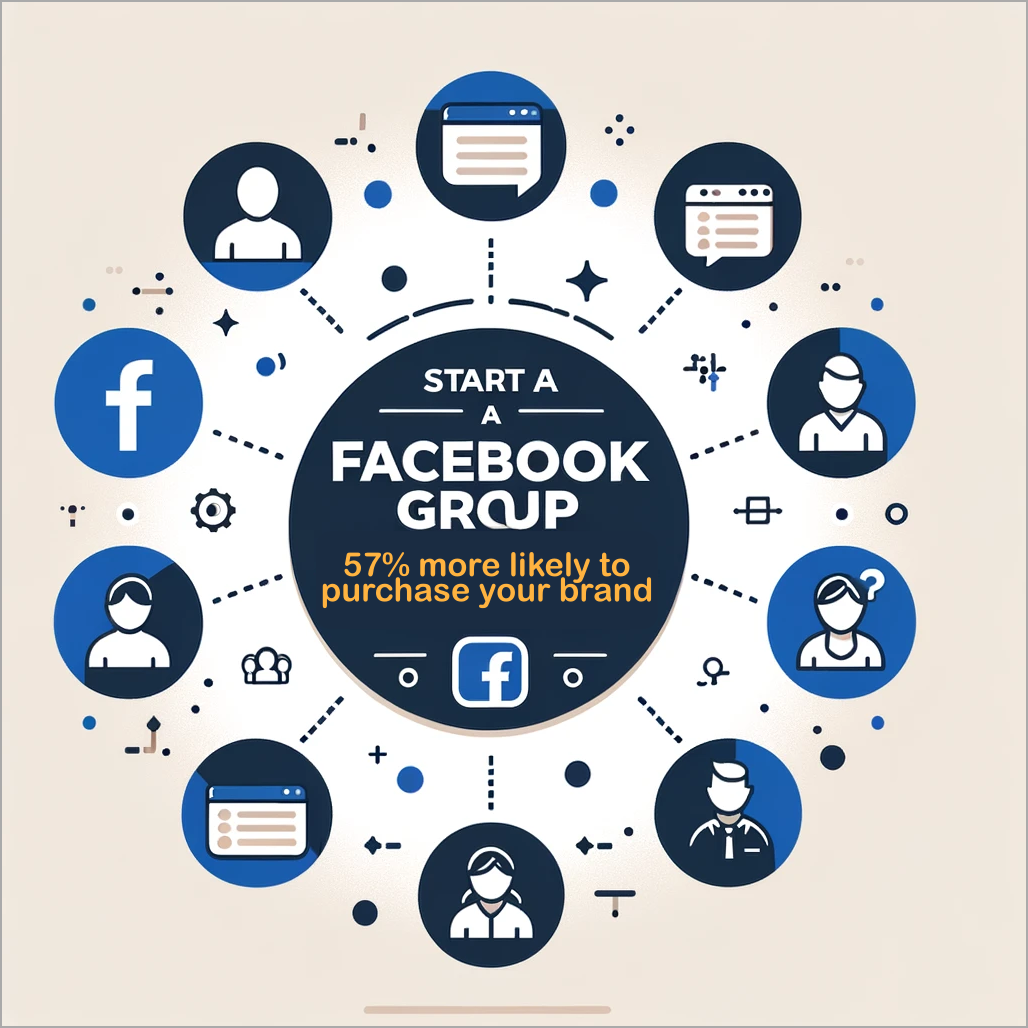
Hosting Events and Webinars
Hosting events, both online and offline, is another excellent way to build authentic connections with your customers. Webinars, workshops, and live Q&A sessions can provide value to your audience while showcasing your expertise and products. According to recent data, businesses that host regular events see a 20% increase in customer lifetime value.
Use platforms like Zoom or Microsoft Teams to host virtual events, making it easy for customers from different locations to participate. In-person events, such as pop-up shops or customer appreciation days, can also create memorable experiences that strengthen customer relationships.
Create Interactive and Relevant Content
The best digital marketing content should encompass four key elements:
- Relevance: Ensure the content is pertinent to your audience’s interests and needs.
- Uniqueness: Provide original opinions, interesting facts, and fresh information about your product or industry.
- Interactivity: Engage your audience through interactive elements such as quizzes, polls, or multimedia.
- Actionability: Include clear calls to action and measurable goals for your content.
Each piece of content should have a clearly defined target market and a specific objective, making it easy to measure its effectiveness and impact. Make your content interactive by adding quizzes, games, or prizes for customers who participate. Interactive content has been shown to boost customer engagement by 50%.

Incorporating User-Generated Content
User-generated content (UGC) is a powerful way to create interactive and authentic content. Encourage your customers to share their experiences with your products on social media using a branded hashtag. Feature their posts on your website and social media channels to build a sense of community and trust. UGC not only provides fresh and engaging content but also acts as social proof, demonstrating the value of your products through real customer experiences. In 2024, 70% of consumers trust UGC more than traditional advertising.
Capitalize on Video Marketing Growth
Video content is the new content king for its highly engaging, effortless format that can effectively convey a brand’s message either in long or short form. Platforms like YouTube, Instagram, and TikTok are ideal for sharing videos that showcase your products, provide tutorials, or tell your brand’s story. Videos are projected to account for 82% of all internet traffic in 2024, making them an essential component of your marketing strategy. And when it comes to video content consumption, YouTube leads all online platforms, and accounts for 37% of all global mobile internet traffic: more than Snapchat, Facebook, and Instagram combined.
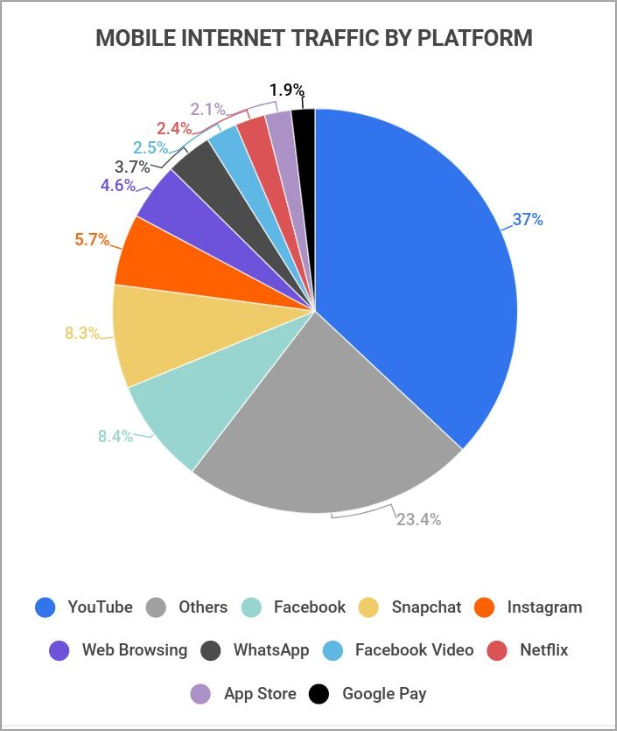
Short-Form Video
With a forecasted 2.85 billion monthly active users by 2025, creating both long and short-form YouTube video content is essential for any comprehensive digital marketing and content marketing approach. In today’s fast-paced world, audiences favor concise, short-form video content to easily and quickly digest information. Short-form videos deliver messages in a fun and interactive manner, enhancing relatability and engagement with target audiences. When short-form branded content projects authenticity and empathy, it significantly boosts consumers’ trust in a company.
YouTube Shorts videos can range from 15 to 60 seconds in length. Similarly, TikTok videos have a duration range from 15 seconds up to 10 minutes, allowing for a wide variety of content lengths and styles on the platform. Compared to static social media images, short-form video attracts more likes, shares, and reactions.
Influencer Marketing Hub offers these top 10 short-form video trends for 2024.
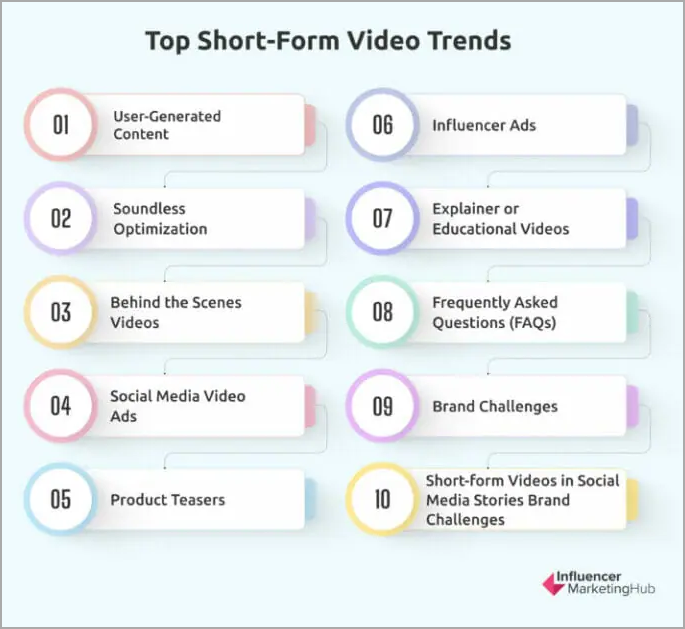
Optimizing for Search Intent (SEO)
When customers open a search engine, it’s likely they are seeking out a general product or service, not your company. You must make sure these customers find you, and that means optimizing for search intent by using SEO strategies. There are four types of search intent:
- Informational: Users ask for a straightforward answer.
- Navigational: Users want directions to a page.
- Commercial Investigation: Users researching multiple sources.
- Transactional: Users plan to make a purchase.
Implementing SEO Best Practices
To capture these search intents, implement SEO best practices on your website. Conduct keyword research using tools like Google Keyword Planner or Ahrefs to identify the terms your potential customers are searching for. Optimize your website’s content, meta descriptions, and headings to include these keywords naturally. Additionally, ensure your website is mobile-friendly and loads quickly, as these factors also influence search engine rankings. In 2024, mobile searches account for 60% of all search traffic.
Creating High-Quality Content
High-quality content is essential for SEO success. Regularly publish blog posts, articles, and other content that addresses your audience’s needs and interests. Focus on creating comprehensive, informative, and engaging content that answers common questions and provides value. Incorporate visual elements such as images, infographics, and videos to make your content more appealing and shareable. Websites with high-quality content see a 55% increase in organic traffic.
Focus on Customer Service
Customers expect the best services from small businesses, as they have more freedom and personal communication than big enterprises. Ensure your customer service is top-notch by leveraging technology like the USPS shipping API to enable faster and more accurate shipping processes. Also, always reply to customer comments and complaints online, in a professional and helpful tone. Rethinking and deploying a new customer service strategy could potentially be a big sell, so consider using it in your next marketing campaign!
Leveraging Customer Relationship Management (CRM) Systems
A CRM system can help you manage customer interactions and improve your service. Platforms like Salesforce, HubSpot, and Zoho CRM provide tools for tracking customer interactions, managing sales pipelines, and automating communication. By using a CRM, you can ensure that no customer inquiry goes unanswered and that you maintain a high level of service across all touchpoints. In 2024, businesses using CRM systems saw a 41% increase in customer retention rates.
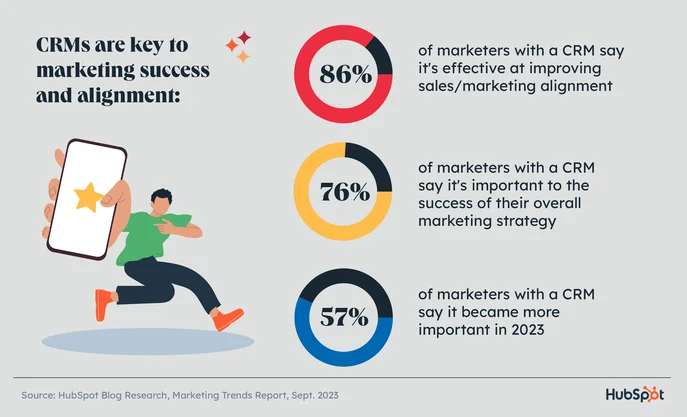
Implementing Loyalty Programs
Loyalty programs are an effective way to reward repeat customers and encourage ongoing engagement. Offer points, discounts, or exclusive access to new products for customers who make frequent purchases or refer new customers to your business. Use platforms like Smile.io or LoyaltyLion to create and manage your loyalty program. According to recent studies, businesses with loyalty programs see a 20% increase in repeat sales.
What’s more:
- Loyalty programs can boost customer retention rates by up to 25%
- Loyalty program members are 59% more likely to choose a brand over a competitor
- Loyalty program members generate 12-18% more revenue growth per year than non-members
- According to 41% of consumers, loyalty programs encourage them to buy from restaurants
- 44% of consumers say loyalty programs influence their hotel selection
Offering Seamless Multi-Channel Retail Experiences
Your small business should be taking advantage of all the channels out there, meaning you will need to focus on maintaining quality and consistency on each one of them. In fact, 73% of retail consumers are omnichannel shoppers. So, if your business decides not to update your website, but takse the time to update your Facebook Marketplace store, customers might find different prices, products, or even varying levels of customer service between your many platforms.
Make sure that if you own a channel, you manage it well, to ensure customers have a seamless multi-channel retail experience.
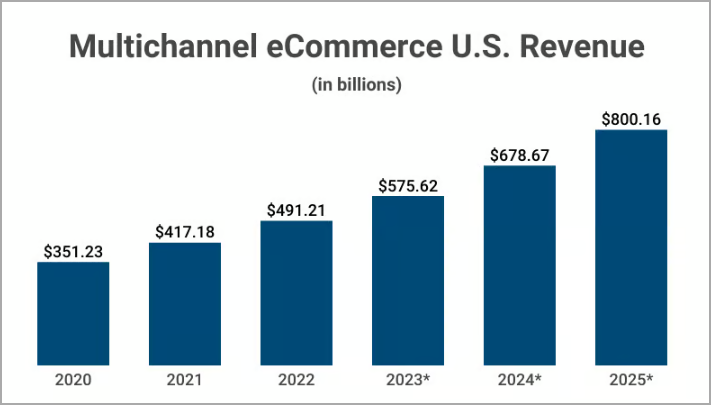
Integrating Online and Offline Channels
To provide a seamless multi-channel experience, integrate your online and offline channels. Ensure that your inventory is synchronized across your website, physical stores, and other sales channels. This allows customers to check product availability, make purchases, and return items through their preferred channel. Tools like Shopify, WooCommerce, and Square offer solutions for managing multi-channel retail operations. Businesses that successfully integrate their channels see a 23% increase in customer satisfaction.
Utilizing Omnichannel Marketing Strategies
Omnichannel marketing ensures that your customers receive a consistent and personalized experience across all touchpoints. Use customer data to create targeted campaigns that reach customers through their preferred channels, whether that’s email, social media, SMS, or in-store promotions. Platforms like Klaviyo and Omnisend provide tools for creating and managing omnichannel marketing campaigns. Omnichannel strategies can boost customer engagement by 18.95% .
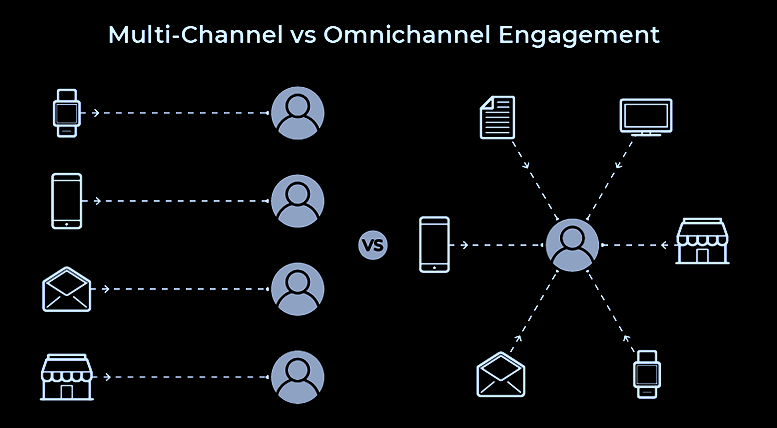
Embracing Emerging Technologies
Staying ahead of the curve often involves embracing new technologies. Artificial intelligence (AI), augmented reality (AR), and virtual reality (VR) can provide innovative ways to engage with customers and enhance their experience.
Utilizing Augmented and Virtual Reality
AR and VR can transform the way customers interact with your products. For example, AR apps can allow customers to visualize how a piece of furniture would look in their home before making a purchase. VR can provide immersive experiences, such as virtual store tours or interactive product demonstrations.
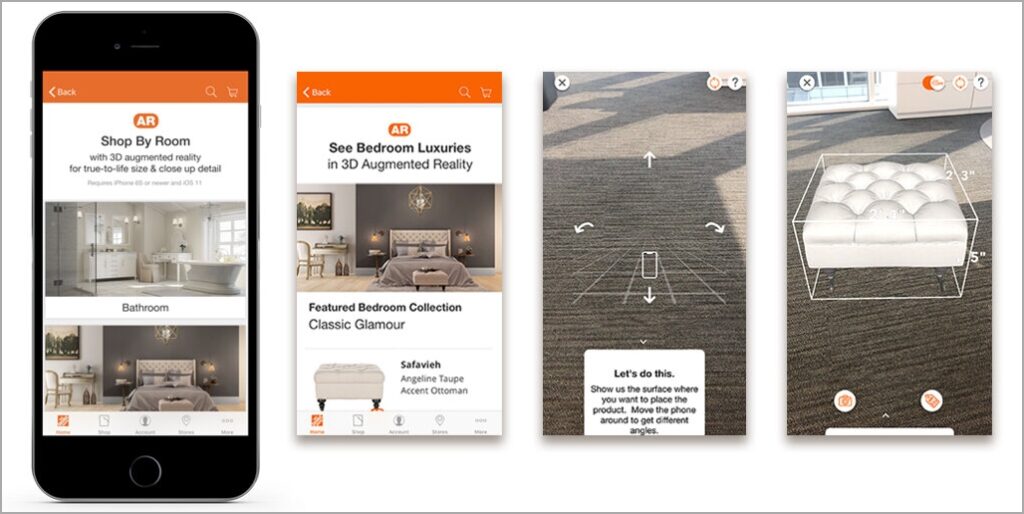
AR can also provide brands with a better understanding of consumer engagement. Brands integrating AR technology into their businesses are seeing increased revenues, spontaneous brand awareness and a jump in customer loyalty.
By incorporating these technologies, you can provide a unique and engaging experience that sets your business apart from the competition. In 2024, 75% of consumers expect retailers to offer AR experiences as part of their shopping journey.
Implementing AI for Personalization
The global revenue market for AI marketing currently stands at 27.4 billion US dollars. By 2028, it’s expected to reach 107.4 billion. AI-driven tools can help you deliver personalized experiences at scale. Use AI to analyze customer data and provide tailored product recommendations, content, and offers. Platforms like Amazon Personalize and Google AI offer powerful tools for leveraging AI in your marketing efforts. By providing highly relevant and personalized experiences, you can increase customer satisfaction and drive higher conversion rates. AI-driven personalization can increase revenue by up to 15%.
Sustainable and Ethical Practices
Consumers are increasingly prioritizing sustainability and ethical practices in their purchasing decisions. Small businesses can appeal to this growing demand by adopting eco-friendly and socially responsible practices.
Promoting Sustainability
Highlight your business’s commitment to sustainability by using eco-friendly materials, reducing waste, and supporting environmental initiatives. Communicate these efforts through your marketing channels, such as your website, social media, and packaging. Partner with organizations and participate in events that promote sustainability to further demonstrate your commitment to the environment. In 2024, 72% of consumers said they are willing to pay more for products from sustainable brands.
Emphasizing Ethical Practices
Transparency and ethical practices are crucial for building trust with your customers. Ensure that your business operations are fair, ethical, and transparent. This includes fair labor practices, sourcing materials responsibly, and being honest in your marketing and communications. Highlighting your ethical practices can differentiate your business and attract customers who value integrity and responsibility. In 2024, businesses with strong ethical practices reported a 25% increase in customer loyalty.
Conclusion
Small businesses have a unique set of advantages that can be leveraged to create successful marketing campaigns. By knowing your audience, providing fast and responsive communication, personalizing your offerings, creating interactive content, optimizing for search intent, focusing on customer service, offering seamless multi-channel experiences, embracing emerging technologies, and adopting sustainable and ethical practices, you can position your business for growth and success in 2024.
Small businesses have a distinct advantage, leveraging their size and ability to pivot quickly into successful, flexible, and winning marketing campaigns. While large businesses must plan, meet, develop, and then roll out a marketing campaign at great cost, small businesses can do it all faster, with a finger on the pulse of the customer. Let’s explore a few digital marketing best practices to help expand small businesses in this monumental year of growth.
Know Your Audience
There are over 500 million Tweets per day and 10 million businesses using Facebook ads to reach their audience . According to recent statistics, 79% of marketers rely on social media data to enhance their audience understanding. Small business owners have the opportunity to know their audience and their customers personally. Sometimes even by name.
The better you know your audience and their needs and preferences, the more targeted you can make your marketing campaigns, and cut through the noise of other companies.
Andre F. Bourque, SocialMarketingFella.com
Leveraging Social Media Analytics
Social media platforms provide a wealth of data about your audience. Tools like Facebook Insights, Twitter Analytics, and Instagram Insights offer valuable information on your followers’ demographics, interests, and behaviors. By analyzing this data, you can tailor your marketing efforts to better resonate with your audience. For instance, if your data shows a significant portion of your audience is interested in sustainability, you can create content that highlights your business’s eco-friendly practices.
Engaging Through Surveys and Feedback
Another effective way to know your audience is through direct engagement. Conduct surveys, polls, and focus groups to gather feedback on your products and services. Platforms like SurveyMonkey or Google Forms make it easy to create and distribute surveys. By understanding what your customers like, dislike, and what they want to see more of, you can make informed decisions that enhance customer satisfaction and loyalty. In 2024, personalized surveys have shown a 30% higher response rate compared to generic ones .
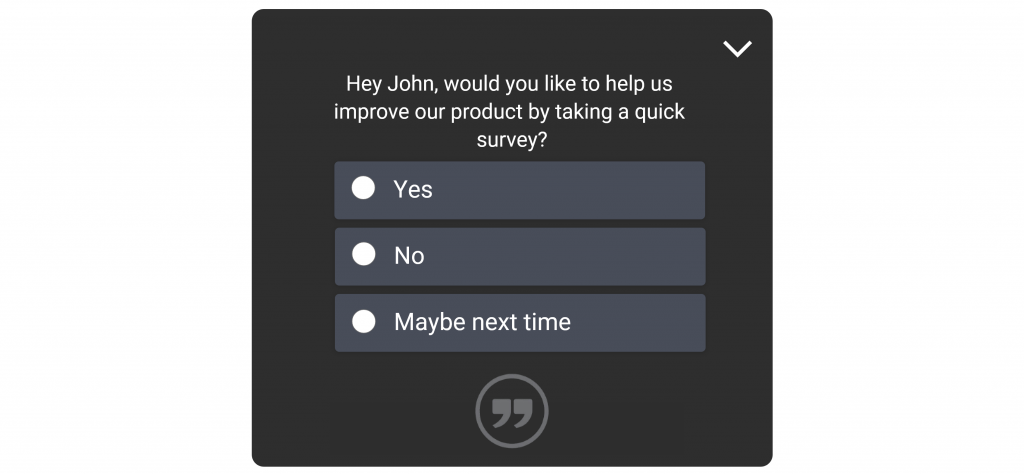
Employ Fast, Responsive Communication
Small businesses have the unique opportunity to deliver faster and more responsive communication, with less expensive and better-received nearshore call centers. While larger enterprises continue to rely on cheap, international call centers, often based in the Philippines or India, you can provide your customers with English-speaking, and culturally sensitive local service by using professional call centers based right in their own country, or even state.
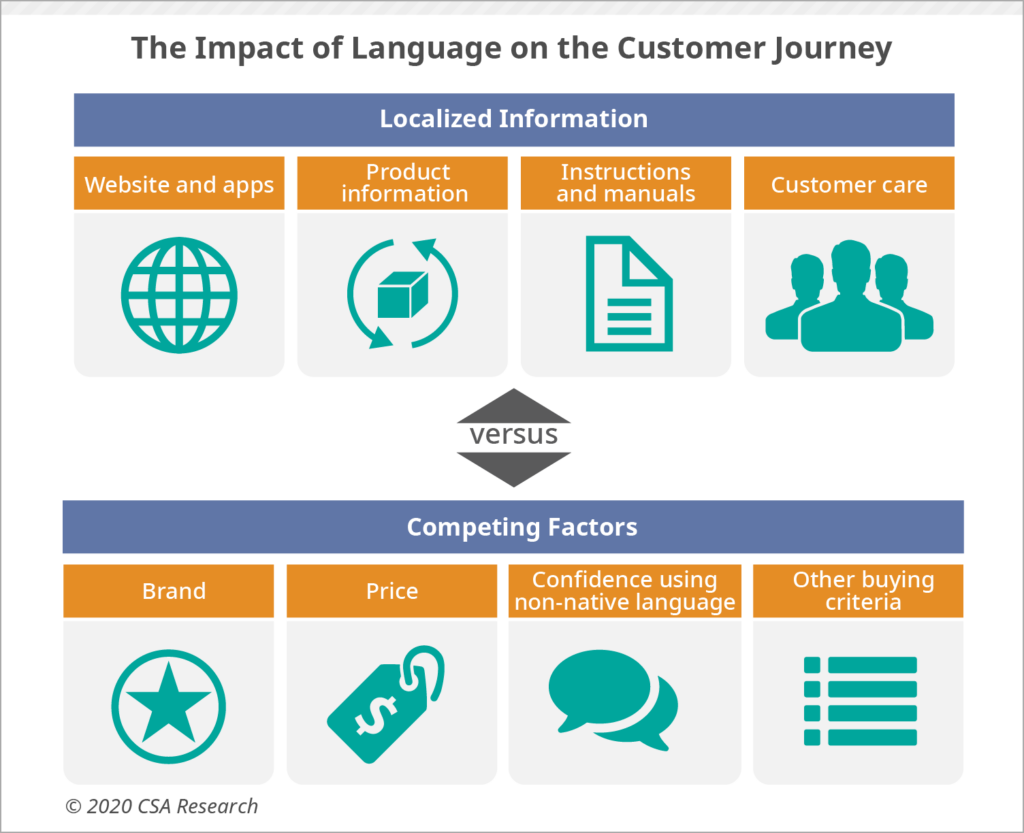
Studies have shown that customers prefer local customer service centers, with 85% of consumers stating that a native speaker significantly improves their customer service experience .
Utilizing Chatbots and AI
In addition to call centers, small businesses can leverage chatbots and artificial intelligence (AI) to provide instant responses to customer inquiries. Platforms like Zendesk and Intercom offer chatbot solutions that can handle common customer service questions, freeing up your human agents to tackle more complex issues. AI-driven chatbots can be available 24/7, ensuring your customers receive prompt assistance regardless of the time of day.
In 2024, businesses using AI chatbots reported a 60% reduction in response times and time-to-purchase, and a 30% increase in customer satisfaction.
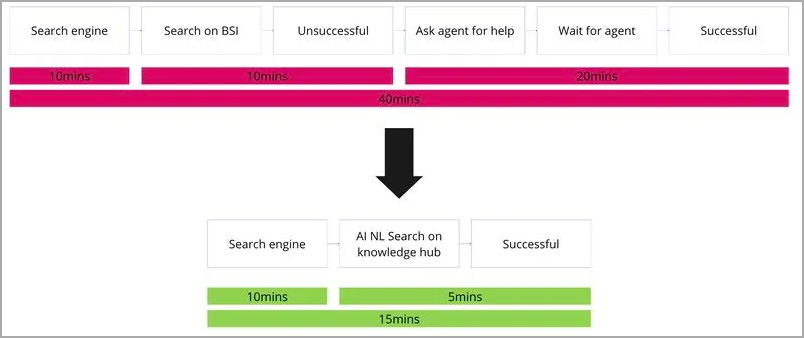
Personalized Email Marketing
Email marketing remains a powerful tool for small businesses. By using email marketing platforms like Mailchimp or Constant Contact, you can send personalized messages to your customers. Segment your email list based on customer behavior and preferences to ensure your communications are relevant and engaging.
For example, if a customer recently purchased a product, you can follow up with an email suggesting complementary products or offering a discount on their next purchase. Statistics show that personalized email campaigns generate six times higher transaction rates compared to non-personalized ones.

Personalization and Authentic Human Connection
Small businesses are also at a huge advantage when it comes to the ability to personalize products and services based on customer needs and build an authentic human connection. It’s easiest to build brand and customer loyalty when you have direct contact with customers, who are the greatest source of actionable feedback on ways you are succeeding, and where your company or product might fall short.
Consider running a marketing promotion targeted at your loyal customer base, offering discounts or special offers as a thank you for their patronage. In 2024, 80% of consumers reported they are more likely to purchase from brands that offer personalized experiences.

Building a Strong Community
Creating a community around your brand can significantly boost loyalty and engagement, as 57% of consumers are more likely to spend more with brands they feel connected to. Brands that develop a bespoke community or establish a social media community platform like a Facebook Group or or other forum where customers can interact with each other and your business serve to capitalize on this metric. Such a community enables customers to share their experiences and feedback while allowing you to engage directly with your audience in a more informal setting.
To sustain and grow it, actively participating in discussions, answer questions, and share valuable content to keep your brand community vibrant and engaged. These interactions provide valuable insights into customer preferences and pain points, helping you tailor your products and services to better meet their needs, and ultimately driving greater customer loyalty and increased spending.

Hosting Events and Webinars
Hosting events, both online and offline, is another excellent way to build authentic connections with your customers. Webinars, workshops, and live Q&A sessions can provide value to your audience while showcasing your expertise and products. According to recent data, businesses that host regular events see a 20% increase in customer lifetime value.
Use platforms like Zoom or Microsoft Teams to host virtual events, making it easy for customers from different locations to participate. In-person events, such as pop-up shops or customer appreciation days, can also create memorable experiences that strengthen customer relationships.
Create Interactive and Relevant Content
The best digital marketing content should encompass four key elements:
- Relevance: Ensure the content is pertinent to your audience’s interests and needs.
- Uniqueness: Provide original opinions, interesting facts, and fresh information about your product or industry.
- Interactivity: Engage your audience through interactive elements such as quizzes, polls, or multimedia.
- Actionability: Include clear calls to action and measurable goals for your content.
Each piece of content should have a clearly defined target market and a specific objective, making it easy to measure its effectiveness and impact. Make your content interactive by adding quizzes, games, or prizes for customers who participate. Interactive content has been shown to boost customer engagement by 50%.

Incorporating User-Generated Content
User-generated content (UGC) is a powerful way to create interactive and authentic content. Encourage your customers to share their experiences with your products on social media using a branded hashtag. Feature their posts on your website and social media channels to build a sense of community and trust. UGC not only provides fresh and engaging content but also acts as social proof, demonstrating the value of your products through real customer experiences. In 2024, 70% of consumers trust UGC more than traditional advertising.
Capitalize on Video Marketing Growth
Video content is the new content king for its highly engaging, effortless format that can effectively convey a brand’s message either in long or short form. Platforms like YouTube, Instagram, and TikTok are ideal for sharing videos that showcase your products, provide tutorials, or tell your brand’s story. Videos are projected to account for 82% of all internet traffic in 2024, making them an essential component of your marketing strategy. And when it comes to video content consumption, YouTube leads all online platforms, and accounts for 37% of all global mobile internet traffic: more than Snapchat, Facebook, and Instagram combined.

Short-Form Video
With a forecasted 2.85 billion monthly active users by 2025, creating both long and short-form YouTube video content is essential for any comprehensive digital marketing and content marketing approach. In today’s fast-paced world, audiences favor concise, short-form video content to easily and quickly digest information. Short-form videos deliver messages in a fun and interactive manner, enhancing relatability and engagement with target audiences. When short-form branded content projects authenticity and empathy, it significantly boosts consumers’ trust in a company.
YouTube Shorts videos can range from 15 to 60 seconds in length. Similarly, TikTok videos have a duration range from 15 seconds up to 10 minutes, allowing for a wide variety of content lengths and styles on the platform. Compared to static social media images, short-form video attracts more likes, shares, and reactions.
Influencer Marketing Hub offers these top 10 short-form video trends for 2024.

Optimizing for Search Intent (SEO)
When customers open a search engine, it’s likely they are seeking out a general product or service, not your company. You must make sure these customers find you, and that means optimizing for search intent by using SEO strategies. There are four types of search intent:
- Informational: Users ask for a straightforward answer.
- Navigational: Users want directions to a page.
- Commercial Investigation: Users researching multiple sources.
- Transactional: Users plan to make a purchase.
Implementing SEO Best Practices
To capture these search intents, implement SEO best practices on your website. Conduct keyword research using tools like Google Keyword Planner or Ahrefs to identify the terms your potential customers are searching for. Optimize your website’s content, meta descriptions, and headings to include these keywords naturally. Additionally, ensure your website is mobile-friendly and loads quickly, as these factors also influence search engine rankings. In 2024, mobile searches account for 60% of all search traffic.
Creating High-Quality Content
High-quality content is essential for SEO success. Regularly publish blog posts, articles, and other content that addresses your audience’s needs and interests. Focus on creating comprehensive, informative, and engaging content that answers common questions and provides value. Incorporate visual elements such as images, infographics, and videos to make your content more appealing and shareable. Websites with high-quality content see a 55% increase in organic traffic.
Focus on Customer Service
Customers expect the best services from small businesses, as they have more freedom and personal communication than big enterprises. Ensure your customer service is top-notch by leveraging technology like the USPS shipping API to enable faster and more accurate shipping processes. Also, always reply to customer comments and complaints online, in a professional and helpful tone. Rethinking and deploying a new customer service strategy could potentially be a big sell, so consider using it in your next marketing campaign!
Leveraging Customer Relationship Management (CRM) Systems
A CRM system can help you manage customer interactions and improve your service. Platforms like Salesforce, HubSpot, and Zoho CRM provide tools for tracking customer interactions, managing sales pipelines, and automating communication. By using a CRM, you can ensure that no customer inquiry goes unanswered and that you maintain a high level of service across all touchpoints. In 2024, businesses using CRM systems saw a 41% increase in customer retention rates.

Implementing Loyalty Programs
Loyalty programs are an effective way to reward repeat customers and encourage ongoing engagement. Offer points, discounts, or exclusive access to new products for customers who make frequent purchases or refer new customers to your business. Use platforms like Smile.io or LoyaltyLion to create and manage your loyalty program. According to recent studies, businesses with loyalty programs see a 20% increase in repeat sales.
What’s more:
- Loyalty programs can boost customer retention rates by up to 25%
- Loyalty program members are 59% more likely to choose a brand over a competitor
- Loyalty program members generate 12-18% more revenue growth per year than non-members
- According to 41% of consumers, loyalty programs encourage them to buy from restaurants
- 44% of consumers say loyalty programs influence their hotel selection
Offering Seamless Multi-Channel Retail Experiences
Your small business should be taking advantage of all the channels out there, meaning you will need to focus on maintaining quality and consistency on each one of them. In fact, 73% of retail consumers are omnichannel shoppers. So, if your business decides not to update your website, but takse the time to update your Facebook Marketplace store, customers might find different prices, products, or even varying levels of customer service between your many platforms.
Make sure that if you own a channel, you manage it well, to ensure customers have a seamless multi-channel retail experience.

Integrating Online and Offline Channels
To provide a seamless multi-channel experience, integrate your online and offline channels. Ensure that your inventory is synchronized across your website, physical stores, and other sales channels. This allows customers to check product availability, make purchases, and return items through their preferred channel. Tools like Shopify, WooCommerce, and Square offer solutions for managing multi-channel retail operations. Businesses that successfully integrate their channels see a 23% increase in customer satisfaction.
Utilizing Omnichannel Marketing Strategies
Omnichannel marketing ensures that your customers receive a consistent and personalized experience across all touchpoints. Use customer data to create targeted campaigns that reach customers through their preferred channels, whether that’s email, social media, SMS, or in-store promotions. Platforms like Klaviyo and Omnisend provide tools for creating and managing omnichannel marketing campaigns. Omnichannel strategies can boost customer engagement by 18.95% .

Embracing Emerging Technologies
Staying ahead of the curve often involves embracing new technologies. Artificial intelligence (AI), augmented reality (AR), and virtual reality (VR) can provide innovative ways to engage with customers and enhance their experience.
Utilizing Augmented and Virtual Reality
AR and VR can transform the way customers interact with your products. For example, AR apps can allow customers to visualize how a piece of furniture would look in their home before making a purchase. VR can provide immersive experiences, such as virtual store tours or interactive product demonstrations.

AR can also provide brands with a better understanding of consumer engagement. Brands integrating AR technology into their businesses are seeing increased revenues, spontaneous brand awareness and a jump in customer loyalty.
By incorporating these technologies, you can provide a unique and engaging experience that sets your business apart from the competition. In 2024, 75% of consumers expect retailers to offer AR experiences as part of their shopping journey.
Implementing AI for Personalization
The global revenue market for AI marketing currently stands at 27.4 billion US dollars. By 2028, it’s expected to reach 107.4 billion. AI-driven tools can help you deliver personalized experiences at scale. Use AI to analyze customer data and provide tailored product recommendations, content, and offers. Platforms like Amazon Personalize and Google AI offer powerful tools for leveraging AI in your marketing efforts. By providing highly relevant and personalized experiences, you can increase customer satisfaction and drive higher conversion rates. AI-driven personalization can increase revenue by up to 15%.
Sustainable and Ethical Practices
Consumers are increasingly prioritizing sustainability and ethical practices in their purchasing decisions. Small businesses can appeal to this growing demand by adopting eco-friendly and socially responsible practices.
Promoting Sustainability
Highlight your business’s commitment to sustainability by using eco-friendly materials, reducing waste, and supporting environmental initiatives. Communicate these efforts through your marketing channels, such as your website, social media, and packaging. Partner with organizations and participate in events that promote sustainability to further demonstrate your commitment to the environment. In 2024, 72% of consumers said they are willing to pay more for products from sustainable brands.
Emphasizing Ethical Practices
Transparency and ethical practices are crucial for building trust with your customers. Ensure that your business operations are fair, ethical, and transparent. This includes fair labor practices, sourcing materials responsibly, and being honest in your marketing and communications. Highlighting your ethical practices can differentiate your business and attract customers who value integrity and responsibility. In 2024, businesses with strong ethical practices reported a 25% increase in customer loyalty.
Conclusion
Small businesses have a unique set of advantages that can be leveraged to create successful marketing campaigns. By knowing your audience, providing fast and responsive communication, personalizing your offerings, creating interactive content, optimizing for search intent, focusing on customer service, offering seamless multi-channel experiences, embracing emerging technologies, and adopting sustainable and ethical practices, you can position your business for growth and success in 2024.






